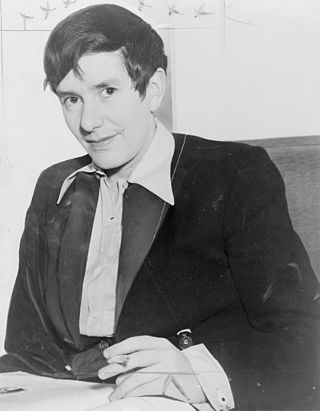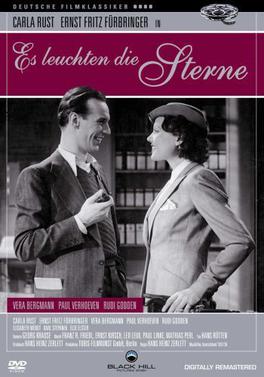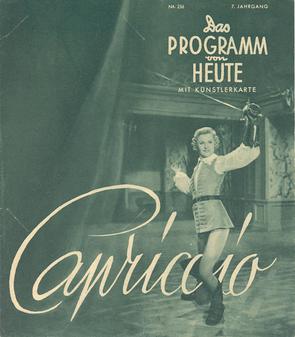This article has multiple issues. Please help improve it or discuss these issues on the talk page . (Learn how and when to remove these template messages)
|
This is a list of the most notable films produced in the Cinema of Germany in 1938.
This article has multiple issues. Please help improve it or discuss these issues on the talk page . (Learn how and when to remove these template messages)
|
This is a list of the most notable films produced in the Cinema of Germany in 1938.
| Title | Director | Cast | Genre | Notes |
|---|---|---|---|---|
| Hänschen Klein | Arnold Fanck | short | ||
| Kaiserbauten in Fernost | Arnold Fanck | short | ||
| Katharine | Elly Heuss-Knapp, Rudi Klemm | animation | ||
| Et orientalsk kunststykke | animation | co-produced with Norway | ||
| En sigarett - en drøm | Hans Fischerkoesen | animation | co-produced with Norway | |
| Silah basina | animation | |||
| Sjakk matt | Hans Fischerkoesen | animation | co-produced with Norway | |
| Tenor | animation | co-produced with Norway | ||
| Im Zeichen des Vertrauens. Ein Beyer-Film | Walter Ruttmann | |||
| Zum guten Tropfen | animation | |||

Nikolaus Barbie was a German officer of the SS and SD who worked in Vichy France during World War II. He became known as the "Butcher of Lyon" for having personally tortured prisoners—primarily Jews and members of the French Resistance—as the head of the Gestapo in Lyon. After the war, United States intelligence services employed him for his anti-communist efforts and aided his escape to Bolivia, where he advised the dictatorial regime on how to repress opposition through torture. In 1983, the United States apologised to France for the U.S. Counterintelligence Corps helping him escape to Bolivia, aiding Barbie's escape from an outstanding arrest warrant.

Klaus Maria Brandauer is an Austrian actor and director. He is also a professor at the Max Reinhardt Seminar.

Klaus Kinski was a German actor. Equally renowned for his intense performance style and notorious for his volatile personality, he appeared in over 130 film roles in a career that spanned 40 years, from 1948 to 1988. He is best known for starring in five films directed by Werner Herzog from 1972 to 1987, who would later chronicle their tumultuous relationship in the documentary My Best Fiend.
Marcel Ophuls is a German-French documentary film maker and former actor, best known for his films The Sorrow and the Pity and Hôtel Terminus: The Life and Times of Klaus Barbie.

Erika Julia Hedwig Mann was a German actress and writer, daughter of the novelist Thomas Mann.

Gustaf Gründgens, born Gustav Heinrich Arnold Gründgens, was one of Germany's most famous and influential actors of the 20th century, and artistic director of theatres in Berlin, Düsseldorf, and Hamburg. His career continued unimpeded through the years of the Nazi regime; the extent to which this can be considered as deliberate collaboration with the Nazis is hotly disputed.

Nazism made extensive use of the cinema throughout its history. Though it was a relatively new technology, the Nazi Party established a film department soon after it rose to power in Germany. Both Adolf Hitler and his propaganda minister Joseph Goebbels used the many Nazi films to promote the party ideology and show their influence in the burgeoning art form, which was an object of personal fascination for Hitler. The Nazis valued film as a propaganda instrument of enormous power, courting the masses by means of slogans that were aimed directly at the instincts and emotions of the people. The Department of Film also used the economic power of German moviegoers to influence the international film market. This resulted in almost all Hollywood producers censoring films critical of Nazism during the 1930s, as well as showing news shorts produced by the Nazis in American theaters.
Edgar Wallace (1875–1932) was a British novelist, playwright and screenwriter whose works have been adapted for the screen on many occasions. His films fall into two categories, British adaptations and the German "Krimi" films.

The Stars Shine is a 1938 German musical revue directed by Hans H. Zerlett and written by Zerlett and Hans Hannes.

Anna Favetti is a 1938 German romantic drama film directed by Erich Waschneck and starring Brigitte Horney, Mathias Wieman and Gina Falckenberg. The screenplay was written by Walter von Hollander, adapted from his own novel Licht im dunklen Haus. It was made at the Babelsberg Studios in Potsdam. Location filming took place in Italy and Switzerland. The film's sets were designed by the art director Gustav A. Knauer.

The Ufa-Palast am Zoo, located near Berlin Zoological Garden in the New West area of Charlottenburg, was a major Berlin cinema owned by Universum Film AG, or Ufa. Opened in 1919 and enlarged in 1925, it was the largest cinema in Germany until 1929 and was one of the main locations of film premières in the country. The building was destroyed in November 1943 during the Bombing of Berlin in World War II and replaced in 1957 by the Zoo Palast.
Helmut Weiss was a German actor, screenwriter, and film director. He was notable for directing Tell the Truth the first film produced in what was to become the future West Germany after the Second World War. It was made in Hamburg in the British Zone of Occupation. Much of the film had already been made at the UFA studios in Berlin shortly before the arrival of the Red Army, but Weiss dramatically re-shot it. The film was significant in its use of outdoor locations in common with other post-war rubble films.

Capriccio is a 1938 German historical comedy film directed by Karl Ritter and starring Lilian Harvey, Viktor Staal and Paul Kemp. The film is set in 18th century France, where a young woman enjoys a series of romantic adventures. The director, Ritter, was attempting to recreate the style of a René Clair comedy. The film's content was criticised by both Joseph Goebbels and Adolf Hitler. Harvey made only one further film in Germany before leaving for France.

By a Silken Thread is a 1938 German drama film directed by Robert A. Stemmle and starring Willy Fritsch, Carl Kuhlmann and Käthe von Nagy. The film was intended to be an exposure of "crooked Jewish capitalists" in line with Nazi racial policy of the era. It was shot at the Babelsberg Studios of UFA in Potsdam. The film's sets were designed by the art director Otto Hunte.

Room 13 is a 1964 thriller film directed by Harald Reinl and starring Joachim Fuchsberger, Karin Dor and Richard Häussler. It was made as a co-production between West Germany, France and Denmark, based on the 1924 novel Room 13 by Edgar Wallace. It was part of Rialto Film's long-running series of German Wallace adaptations.

The Man Who Couldn't Say No is a 1938 German romantic comedy film directed by Mario Camerini and starring Karl Ludwig Diehl, Karin Hardt, and Leo Slezak. It is a remake of the 1936 Italian film But It's Nothing Serious also directed by Camerini. It was shot at the Halensee Studios in Berlin. The film's sets were designed by the art directors Gabriel Pellon and Heinrich Richter.
Klaus Detlef Sierck was a German child actor. He was the son of the theatre and film director Hans Detlef Sierck and the theatre actress Lydia Brincken. After his parents separated in 1928, Sierck grew up with his mother and was distanced from his father during the Nazi period after the latter married actress Hilde Jary, who was Jewish.

Dance on the Volcano is a 1938 German historical musical comedy film directed by Hans Steinhoff and starring Gustaf Gründgens, Sybille Schmitz and Ralph Arthur Roberts. It was shot at the Johannisthal Studios in Berlin. The film's sets were designed by the art director Rochus Gliese. A light-hearted costume film, the production was a significant departure for both its director, best known for his Nazi-supporting propaganda films, and its star Gründgens, celebrated as a classical actor.

I Love You is a 1938 German romantic comedy film directed by Herbert Selpin and starring Viktor de Kowa, Luise Ullrich and Olga Limburg. It was shot at the Johannisthal Studios in Berlin. The film's sets were designed by the art directors Karl Weber and Erich Zander. It is in the style of a screwball comedy, inspired by the story of Adam and Eve.